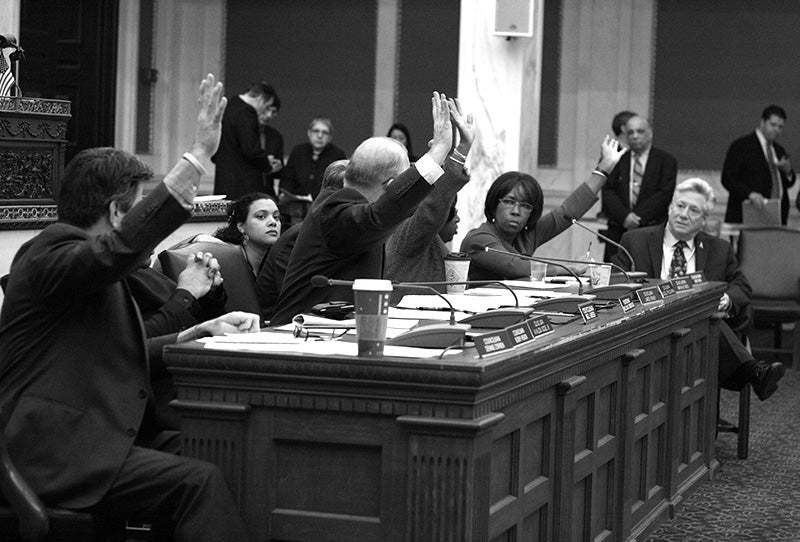Urban agriculture uses to remain by-right in neighborhood commercial corridors

UPDATED 3:12 p.m., 1/23/2013
It appears that community gardens and farms will continue to be permitted by right in neighborhood commercial corridors, as the new zoning code intended.
Councilman Brian O’Neill, who introduced a bill last fall which would have restricted community gardens and dozens of other uses in CMX-2 and CMX-2.5 zoning districts, agreed on Wednesday to remove the Special Exception requirement for urban agriculture uses from the bill, according to an internal email obtained by PlanPhilly. O’Neill wrote:
Dear Colleagues,
After discussions with the Council President and several Councilmembers, I will be amending Bill 120917 this Thursday 1/24/13.
The amendment will allow community gardens and market or community supported farms as a matter of right, as they would have originally been permitted under the new zoning code.
Very truly yours,
-Brian
Councilman, 10th District
The change comes after a wave of opposition from urban farmers and community gardening advocates. At the end of November, the Planning Commission voted to request an additional 45 days to review the bill, which prevented Council from taking a final vote on it during its fall session. Council’s Rules Committee gave the bill a favorable recommendation in December.
While the amendment is likely to please urban agriculture advocates, it may not go far enough for some. If the rest of the bill passes, other uses, such as group living and visitor accommodations, will still be restricted beyond what was intended by the Zoning Code Commission and by City Council when it adopted the new code in December of 2011.
Additionally, the bill has some implications for the mixed-use density of neighborhood commercial corridors. One provision states: “When the proposed use is in an attached or semi-detached building, the household living use regulations of the residential district to which it is attached apply. Otherwise, the residential use regulations of the most restrictive adjacent residential district apply.” That provision applies to CMX-1 and CMX-2 districts, but not to CMX-2.5.*
That means, for example, that a building with a commercial storefront on the first floor could have at most one unit on upper floors if the building is adjacent to a single-family residential district. The code says that two buildings are adjacent when they “touch or share a contiguous boundary or border, or [are] separated only by an alley, shared driveway, or street.” By that definition, parts of the Germantown Ave. commercial corridor, for example, would be restricted to one residential unit per building; most of the corridor’s CMX-1 parcels are adjacent to RSA-5 single-family parcels.*
Councilman O’Neill did not respond to requests for comment on Tuesday. To date, no member of City Council has articulated a full explanation of what problem O’Neill’s bill is meant to resolve.
Other Council members may have amendments of their own. Seventh-District Councilwoman María Quiñones-Sánchez said on Wednesday that her office was working on drafting amendments to the bill that she hoped would be ready to offer on Thursday morning, at Council’s first meeting of the year.
“We still have a few amendments,” Sánchez said. “We are concerned about residential limitations above [commercial], artist work live space and transit, since I represent 10 el stops.”
Feel free, as always, to add thoughts of your own below.
Note: an earlier version of this article said the additional household regulations applied to CMX-2.5 districts, but they apply only to CMX-1 and CMX-2. Additionally, the Passyunk Ave. commercial corridor is largely CMX-2.5, making it exempt from the limit on residential units. PlanPhilly regrets the errors.
Contact the reporter at jbrey@planphilly.com and follow him on Twitter @jaredbrey
WHYY is your source for fact-based, in-depth journalism and information. As a nonprofit organization, we rely on financial support from readers like you. Please give today.




